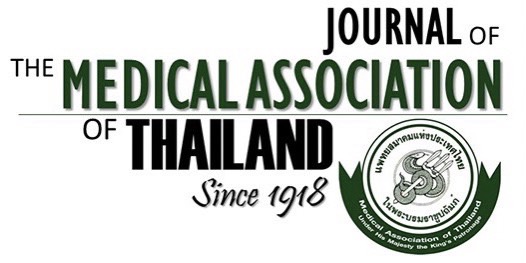In-Hospital Outcomes of Primary Percutaneous Coronary Intervention in King Chulalongkorn Memorial Hospital: 11 Years of Experience
Jiranut Cholteesupachai MD*, Wacin Buddhari MD*, Wasan Udayachalerm MD*, Jakrapun Chaipromprasit MD*, Vorarit Lertsuwunseri MD*, Patcharin Kaewsukkho RN*, Smonporn Boonyaratavej MD*, Suphot Srimahachota MD*
Affiliation : * Cardiac Center and Division of Cardiology, Department of Medicine, King Chulalongkorn Memorial Hospital, Chulalongkorn University, Bangkok, Thailand
Background : Primary percutaneous coronary intervention (PCI) appears to be the preferred reperfusion method for patients
with ST-segment elevation myocardial infarction(STEMI). This method was introduced in our hospital before the year 2000.
In Thailand, data showing long experience results in patients with STEMI who underwent primary percutaneous coronary
intervention remain limited.
Objective : To demonstrate 11-yr experience of primary percutaneous coronary intervention at King Chulalongkorn Memorial
Hospital.
Material and Method: This retrospective descriptive single-center study analyses clinical characteristics, angiographic
features and in-hospital outcomes of 772 patients with STEMI who underwent primary percutaneous coronary intervention
between 2000 and 2010.
Results : Seven hundred seventy two consecutive patients with STEMI were enrolled in the study. Three-fourth of the patients
were male. Mean age was 60.13 years (range 28 to 96 years) and 12.6% were older than 75 years old. Forty-eight percent
of patients were referred from hospital without cardiac catheterization facilities. Of these patients 94.4% underwent primary
PCI and rescue PCI was done in 5.6% of patients. There were 27% of patients with left ventricular ejection fraction less
than 40%, 21% of patients with Killip’s class IV, and 12% suffered cardiac arrest prior to angiography. Median door-to-
balloon time in referred and non-referred patients was 28 and 104.5 minutes, respectively. Ninety-two percent of referred
patients and 36% of non-referred patients, door to balloon time were within 90 minutes. About half of the patients had
multi-vessels disease at that time of diagnosis. The overall angiographic success rate was 96%. Platelet glycoprotein llb/
llla inhibitors were used in two-third of patients and stent placement in 82%. Post procedural Thrombolysis In Myocardial
Infarction (TIMI) 3 fl ow was documented in 87%. Intra-aortic balloon pump was used in 15% and thrombus aspiration
device in 47%. During hospital stay, in-hospital mortality was 8.5% and 80% of those cases died from cardiac cause.
One-third of patients died if they had Killip’s class IV at presentation compared with 1.6% in patients with Killip’s
class I-III. In-hospital major adverse cardiovascular event was 10.4%.
Conclusion : During 11 years of primary PCI experience in King Chulalongkorn Memorial Hospital, the angiographic
success rate was high with acceptable in-hospital mortality and major adverse cardiac event. This strategy of treatment
should be the treatment of choice for patients with STEMI in experienced PCI capable center with 24 hours/7 days
availability.
Keywords : Primary percutaneous coronary intervention, ST-segment elevation myocardial infarction, Door to balloon time



